
Introduction to HyperText Markup Language (HTML).
- Subject:
- Applied Science
- Computer Science
- Material Type:
- Interactive
- Lesson
- Provider:
- Khan Academy
- Provider Set:
- Khan Academy
- Author:
- Pamela Fox
- Date Added:
- 07/15/2021

Introduction to HyperText Markup Language (HTML).

How to create a comment in an HTML document.

How to create a hyperlink ('link') to a location on the same page using HTML.

How to create a hyperlink ('link') using HTML.

How to use HTML to create a table on a webpage.
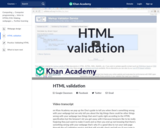
Learn how to validate your webpages with the W3C validator service.
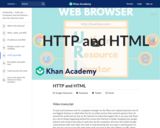
Tumblr founder David Karp and Xbox program manager Jasmine Lawrence give a detailed description of how files and webpages are sent and received using HTTP and HTML.
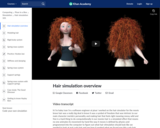
Overview of this lesson.
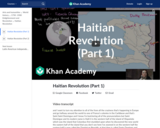
Slaves rebel in Saint-Domingue (Haiti). Rise of Toussaint L'Ouverture. Created by Sal Khan.

Dessalines takes on Leclerc and Rochambeau. Created by Sal Khan.

One of the five pillars of Islam central to Muslim belief, Hajj is the pilgrimage to Mecca that every Muslim must make at least once in their lifetime if they are able; it is the most spiritual event that a Muslim experiences, observing rituals in the most sacred places in the Islamic world. Mecca is the birthplace of the Prophet Muhammad. The sanctuary there with the Ka‘ba is the holiest site in Islam. As such, it is a deeply spiritual destination for Muslims all over the world; it is the heart of Islam.
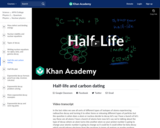
Carbon dating is a real-life example of a first-order reaction. This video explains half-life in the context of radioactive decay. Created by Sal Khan.
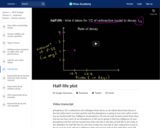
Definition of half-life and graphing the decay of phosphorus-32. Calculating how much phosphorus-32 remains after 57.2 days. Created by Jay.

This entire class is, of course, designed to help alleviate test stress by offering numerous strategies and perspectives when it comes to general preparation for and participation in academia.

The projects in this guide use a student-driven approach to learning. Instead of simply learning about AI through videos or lectures, the students completing these projects are active participants in their AI exploration. In the process, students work directly with innovative AI technologies, participate in “unplugged” activities that further their understanding of how AI technologies work, and create various authentic products—from machine learning models to video games—to demonstrate their learning.
Project 1: Programming with Machine Learning
Project 2: AI-Powered Players in Video Games
Project 3: Using AI for Robotic Motion Planning
Project 4: Machine Learning as a Service
Visit the ISTE website with all the free practical guides for engaging students in AI creation: https://www.iste.org/areas-of-focus/AI-in-education

This guide provides student-driven projects that can directly teach subject area standards in tandem with foundational understandings of what AI is, how it works, and how it impacts society.
Instead of simply learning about AI through videos or lectures, the students completing these projects are active participants in their AI exploration. In the process, students work directly with innovative AI technologies, participate in “unplugged” activities that further their understanding of how AI technologies work, and create various authentic products—from presentations to designing an AI robot—to demonstrate their learning.
• Project 1: What AI Does Well and Does Not Do Well
• Project 2: Training Data and Machine Learning
• Project 3: Senses vs. Sensors
• Project 4: Navigation and AI
Visit the ISTE website with all the free practical guides for engaging students in AI creation: https://www.iste.org/areas-of-focus/AI-in-education

This guide provides student-driven projects that can directly teach subject area standards in tandem with foundational understandings of what AI is, how it works, and how it impacts society. Several key approaches were taken into consideration in the design of these projects. Understanding these approaches will support both your understanding and implementation of the projects in this guide, as well as your own work to design further activities that integrate AI education into your curriculum.
Project 1: AI Chatbots
Project 2: Developing a Critical Eye
Project 3: Using AI to Solve Environmental Problems
Project 4: Laws for AI
Visit the ISTE website with all the free practical guides for engaging students in AI creation: https://www.iste.org/areas-of-focus/AI-in-education

In this guide, students’ exploration of AI is framed within the context of ethical considerations and aligned with standards and concepts, and depths of understanding that would be appropriate across various subject areas and grade levels in K–12. Depending on the level of your students and the amount of time you have available, you might complete an entire project, pick and choose from the listed activities, or you might take students’ learning further by taking advantage of the additional extensions and resources provided for you. For students with no previous experience with AI education, exposure to the guided learning activities alone will create an understanding of their world that they likely did not previously have. And for those with some background in computer science or AI, the complete projects and resources will still challenge their thinking and expose them to new AI technologies and applications across various fields of study.
Project 1: Fair's Fair
Project 2: Who is in Control?
Project 3: The Trade-offs of AI Technology
Project 4: AI and the 21st Century Worker
Visit the ISTE website with all the free practical guides for engaging students in AI creation: https://www.iste.org/areas-of-focus/AI-in-education.
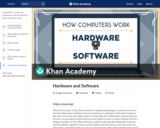
Engineering manager Erica Gomez, program manager Jerome Holman, and Microsoft founder Bill Gates explain how a computer's hardware and software work together.
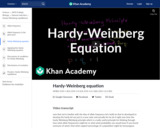
This equation relates allele frequencies to genotype frequencies for populations in Hardy-Weinberg equilibrium. Created by Sal Khan.